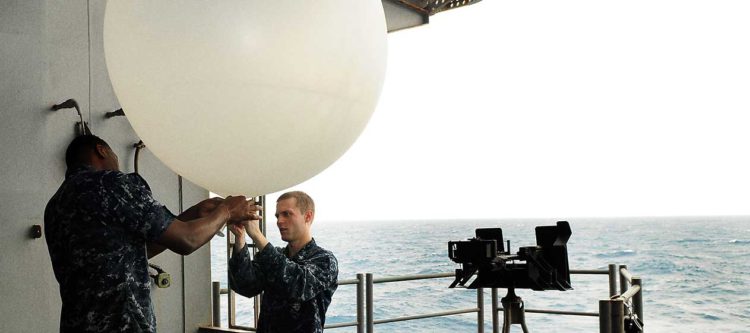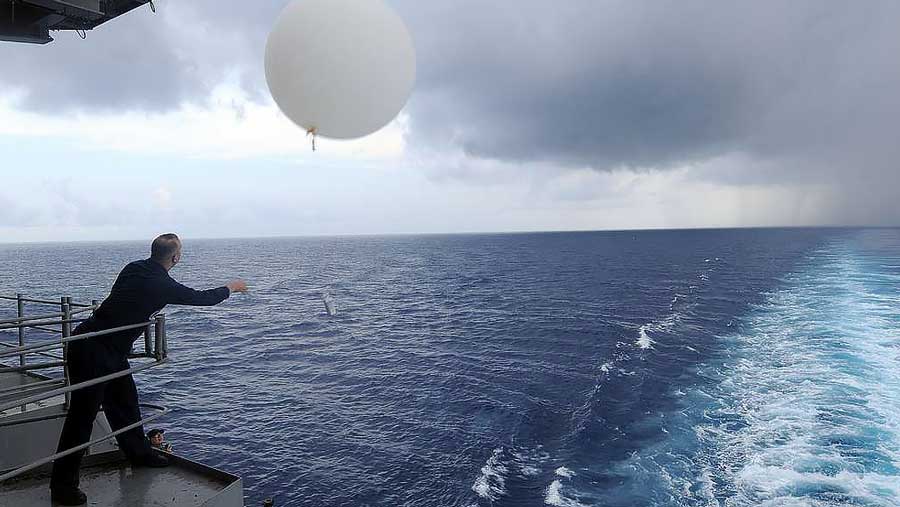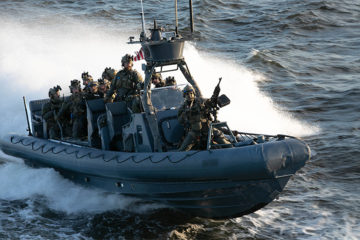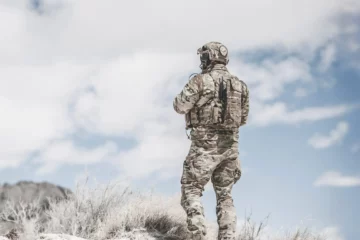What’s old is useful again – aerostats and mobile mesh combine to deliver assured comms

The military is perpetually investing in new, envelope-pushing technologies that are designed to give our warfighters superiority over their adversaries in each and every warfighting domain.
In just the past decade, the military has heavily invested or explored options for the next-generation fighter, the next-generation armored personnel carrier, the next-generation destroyer, and the next-generation vertical lift aircraft – among other weapons systems and platforms. And for very good reason. By constantly innovating and developing new, cutting-edge weapons systems and platforms, the U.S. Department of Defense can ensure that near-peer adversaries don’t become peers militarily.
But, sometimes, the best solution for a problem isn’t always a new one. Sometimes, an old technology that was either forgotten or pushed aside by new developments can hold the key to overcoming a modern problem facing our military.
This is why the U.S. Air Force explored the concept of a light attack aircraft fleet a few years ago. The concept behind the fleet was to have an alternative for lower-risk and low-threat air support missions where the adversary is greatly outclassed by even less-sophisticated and cutting-edge aircraft.
For missions against insurgents, or other lightly armed and less-prepared adversaries, a propeller-driven, light attack aircraft is not only a viable option but can accomplish the mission at a fraction of the cost. And, in some instances – such as a need to loiter overhead providing air support to ground troops – can even outperform some more modern alternatives. In fact, it’s estimated that a light attack aircraft can perform some missions at approximately 1/60 the cost of the F-22 Raptor, and can be superior for missions that require a high loiter time.
Smaller, gas-filled balloons called aerostats are already utilized across military, law enforcement, and emergency response organizations for a number of use cases ranging from intelligence, surveillance, and reconnaissance (ISR), to communications.
While a turboprop aircraft seems like an unlikely weapon for a modern military, there are justifiable use cases for it, even if the technology harkens back to aircraft of a bygone era.
This is just one example of an older technology that may have been overlooked or destined for the trash heap that’s making a comeback to help meet a modern challenge. There’s another aviation technology or solution that is making a comeback, but for a very different reason – the aerostat.
Rapidly deployable assured comms…in your trunk
While the turboprop aircraft is a throwback to some of the first airplanes, it’s not nearly as old as some of the first successful flying machines – many of which were hot air or gas balloons. Today, dirigibles, airships, and blimps are mostly relegated to novelty acts during large sporting events. That’s most likely a result of some high-profile and highly photogenic airship tragedies of the late 1930s. But they can be so much more.
Smaller, gas-filled balloons called aerostats are already utilized across military, law enforcement, and emergency response organizations for a number of use cases ranging from intelligence, surveillance, and reconnaissance (ISR) to communications. These lighter-than-air aircraft can be deployed quickly and tethered in place, where they can loiter almost indefinitely, making them a resilient tool for getting payloads up high, where they can benefit from a higher vantage point, or mitigate line-of-sight restrictions and limitations.

A deflated aerostat has an incredibly small footprint. This means it can be stored in the trunk of a first responder or law enforcement officer’s vehicle, or it can be packed and deployed in theater with a small unit of warfighters. Inflating an aerostat is not complicated, and requires no significant training or specialized instruction, so practically anyone in law enforcement, the military, or first responder organizations can use them. And, when needed, the aerostat can be inflated quickly, tethered in place, and immediately put to use.
And when it is put to use, one of the benefits it can deliver is elevating essential communications equipment, including mobile mesh networking devices.
By attaching a mobile mesh networking node to an aerostat, and tethering that aerostat in place, a large area can be covered in a bubble of connectivity. All units within that bubble would be able to easily communicate with each other via text message, and also be able to utilize applications like the ATAK app to see everyone’s physical location and gain situational awareness. Since aerostats can stay in place for a long time, and are relatively static when tethered in place, that connectivity can exist as long as the mission requires. When the mission requirements change, the aerostat can be deflated and redeployed where it’s needed.
By attaching a mobile mesh networking node to an aerostat, and tethering that aerostat in place, a large area can be covered in a bubble of connectivity. All units within that bubble would be able to easily communicate with each other via text message, and also be able to utilize applications like the ATAK app to see everyone’s physical location and gain situational awareness.
Depending on the size and construction of an aerostat, they can fly at altitudes ranging from 1,000 feet to more than 15,000 feet. However, there is a wide ecosystem of solutions that can be considered aerostats, and practically any lighter-than-air vessel could qualify. A group of helium-filled party balloons could be an aerostat capable of carrying a mobile mesh networking node to dizzying heights – and do so with almost no upfront cost, and no specialized equipment.
Innovative, cutting-edge technologies are essential for keeping our military ahead of near-peer adversaries and ensuring our superiority across every warfighting domain. Older technologies and solutions can still have a place in the kit of warfighters, law enforcement personnel, and first responders. Aerostats carrying mobile mesh networking nodes can deliver a blanket of connectivity, communications, and situational awareness over a large geographic location. They can also do so almost instantaneously, at a low cost, and for the duration of the mission. There will always be a use case for that.







No Comment